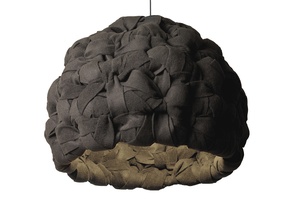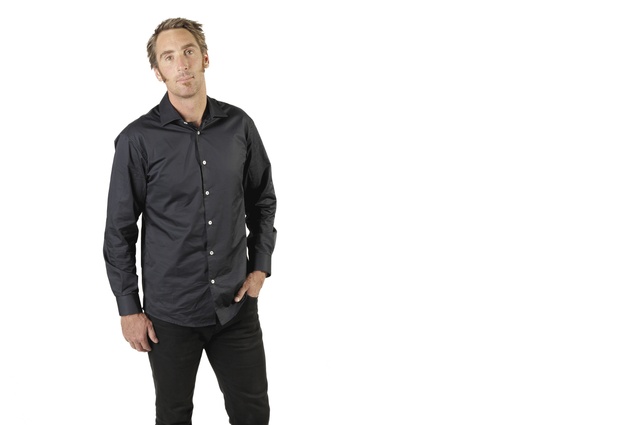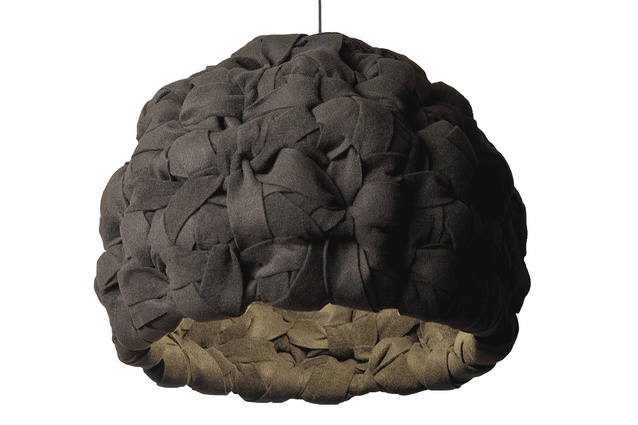With Timothy John
Urbis catches up with Timothy John who debuted his Woven collection at Design55 at Urbis Designday 2012.
Urbis: Sum up your aesthetic/approach in five words.
Timothy John: Experimental, Playful, Sculptural, Textural, Dramatic.
UR: What are you aiming for when you start a design?
TJ: I am a selfish designer, creating for myself hoping that others will welcome my vision. I hope that there will one day be a recognisable common thread linking the collections and individual works subtly to one another and to my design identity. A new project will begin with a material or process that I have a fascination with and a desire to communicate as a design piece. My agenda is to find the most-effective way to showcase it, rarely knowing the end result until it reveals itself naturally with time, thought and experimentation. I thrive in challenging preconceived ideas about a material, process or object function. While I strive to express the beauty of a material’s raw state by being careful not to over-design or conceal it, the end result will likely exhibit an unexpected and even contradictory angle.
UR: Your work is quite theatrical and sculptural. Why is that significant to you?
TJ: I design with an almost obsessive passion for the desire to create pieces that have a sense of life to them. People surround themselves with soulless objects that often mean nothing to them other than the utilitarian service they provide. In some cases, this is all that is required but it’s amazing what we have grown accustomed to. Furniture once equalled art. People had great pride in the household goods they possessed. They were beautiful objects that were cherished and handed down through the generations. Over time and through highly influential events, our values have changed. The current empire of mass production we are experiencing is evidence of this. I hope that my work stirs a reawakening and appreciation for objects with personality.

UR: Where is that line between art and design in your work? Is there even a line or do you consider your pieces like artworks?
TJ: This has become a popular question in recent years. The area is grey and seems to confuse a lot of people, but I question why we feel such a strong need to put labels on things? I like that it is difficult to define and that we are forced to relinquish some control. The unknown is interesting! Today, I consider myself an art-inspired designer but tomorrow I may deem myself a design-inspired artist. I don’t think it really matters. An artist generally starts with a blank canvas and the piece develops with greater freedom of expression. A designer, in the commercial sense, usually starts a project with a brief which is accompanied by restrictions and a more calculated, defined process to achieve a successful end result. I naturally have a free-thinking mind like an artist but enjoy expressing my work in a slightly more controlled and functional way to serve a purpose.
UR: What are some pieces of furniture you wish you had designed or that you are inspired by?
TJ: Maarten Baas’ Real Time series is genius: a set of works in which people’s actions were filmed as analogue clocks. ‘The Sweeper’ showcases two men sweeping rubbish in the shape of clock hands illustrating the passing of time. ‘The Grandfather’ portrays a man inside a floor-standing clock drawing hands on the glass face with a marker, rubbing them out and repeating as time passes. I admire his unique point of view. In stark contrast to a lot of designs that now transfer from computer to machine manufacture without human intervention, Max Lamb chisels, chips, buries, grows and smelts materials into rugged and bold forms. He introduced me to the sentimental beauty that a process can bring to a finished product. His free-thinking, hands-on, experimental approach captivated me years ago and I’ve been an admirer and follower of his work ever since.
UR: Your recent work is clearly part of a collection. How does working within a series help to support an idea?
TJ: There is strength that comes with exhibiting a collection. My work is all about evoking an emotion as I am very interested in studying human response in a variety of environments. A collection packs a punch and observing the reaction as a whole is fascinating. In developing a series, it becomes evident that all forms, mediums and materials possess individual traits. Some flow well together while others feel forced right from the beginning and never eventuate. Where a technique is the central theme of a collection, there really is no better way to fully explore it than to apply it to a range and watch it take shape.













